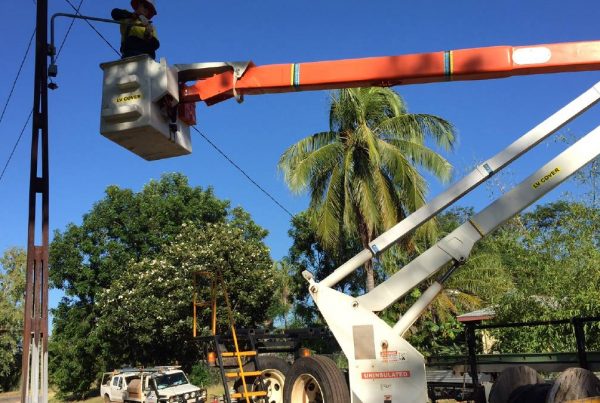

The principle of how solar lighting work is actually quite simple. The solar panels(photovoltaic cells) collects solar energy from the sun(solar power) and transforms it into electricity. This electricity is then used to generate light. After being collected, solar power can either be stored in a rechargeable battery, or used immediately to turn on light sources such as LEDs.
A rechargeable gel cell battery allows you to use the same battery over and over again.
The light is being switched on by an intelligent controller, which is turning on the LED light using a combination of the energy that has been collected and stored in the. The panel itself consists of several layers of material, including and various chemicals that can make positive and negative layers.
What is solar lighting used for?

Solar lighting is mainly used to provide outdoor lighting in the evenings and at night. It is used both in street lamps and for smaller areas, such as the garden lighting or porch. Solar-powered household lighting can replace other light sources, such as candles or kerosene lamps.
Solar panels absorb solar energy into the inverter because that will save energy in your battery for current and later use. In rural areas, solar lamps, commonly called solar lanterns, which use LED or CFL, are used to replace kerosene lamps and other cheap lighting alternatives. They may have individual panels for each lamp in a system, or they may have a large central solar panel and a battery bank to power multiple lamps.
Benifits of solar energy?
Solar energy has become a popular alternative renewable energy source. Because they have a lower operating cost than kerosene lamps, because renewable energy from solar power is free, a natural resource, unlike other sources of energy. Solar energy can drastically reduce your costs of electricity bills. In addition, solar lamps do not produce indoor air pollution unlike kerosene lamps. Also solar lighting are great even with power outages. However, solar lamps generally have a higher initial installation cost and are climate-dependent.
Instead of installing your own solar panels to benefit from solar energy, you can only have a few cables running through your home and supplying electricity to the power grid. We can also manage and control these solar lights remotely, which is the best advantage of these lights. This part of the lamp saves energy from the solar panel and provides energy when needed at night when there is no light energy available. For example, 36 monocrystalline solar cells will form a small solar panel that can easily produce about ½ volts. Solar cells are those dark panels you see at the top of solar lights.

What are the features of solar light?
Solar lighting solution designs are compact, lightweight and are used in a wide range of outdoor lighting applications to illuminate roads, streets, gated communities, roads, resorts, backyards, patios, lawns, pergolas, gazebos, parks, parking lots, construction sites, playgrounds, school and university buildings, industrial facilities and any remote area without access to grid electricity. Suitable for indoor and outdoor use, flameless solar candles and torches are a safe alternative to a real candle. A solar lamp, also known as a solar light or solar lantern, is a lighting system composed of an LED lamp, solar panels, battery, charge controller and there can also be an inverter. The lamp is powered by electricity from batteries, battery charge is made by using a solar panel (photovoltaic solar panel).

Can a community benifit from solar lighting?
Solar street lights provide cities with an economical way to illuminate streets, sidewalks and parking lots, creating greater safety for pedestrians and drivers alike. Solar lights use the solar energy from the solar cells that convert energy from solar radiation into energy that can make the lights work. Solar lighting provides cheap, attractive and low-maintenance lighting for homes, businesses and public infrastructure, while reducing environmental impact.









